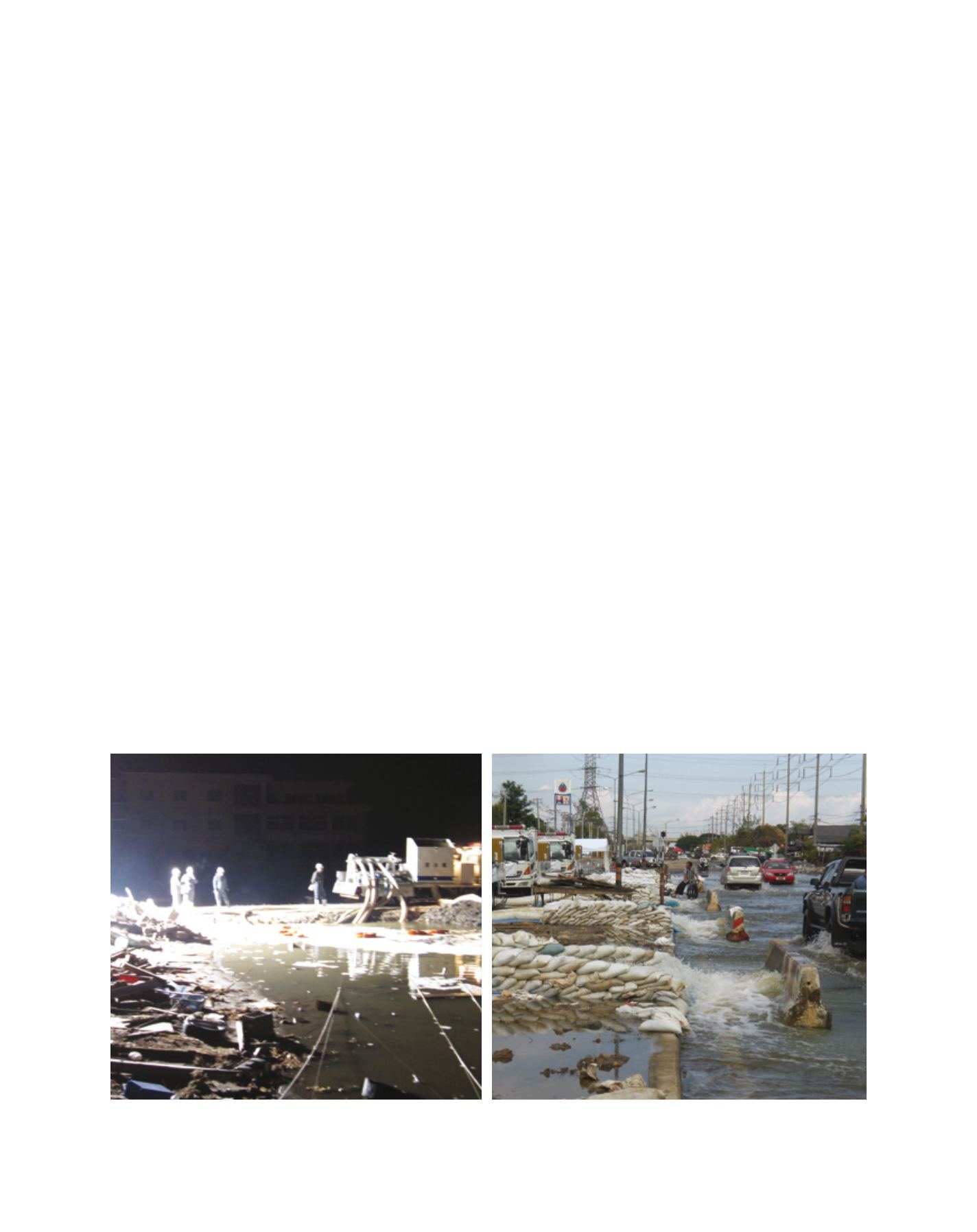

[
] 105
W
ater
E
ducation
and
I
nstitutional
D
evelopment
elderly people. There were three main reasons for these deaths in
different parts of the region. First, floodwaters 3 m deep damaged
houses directly and killed three elderly people (75-78 years old) who
had insisted on not leaving in their homes. Second, with a 1.5 m depth
inundation, two people (a 37-year-old man and a 42-year-old woman)
were killed while moving from their houses to the evacuation point.
Third, many houses were inundated but not destroyed by the power
of the flood; therefore people remained on upper floors of their homes
and did not lose their lives. Four elderly people living alone, however,
drowned in floodwaters that rose just 1 m above floor level. Being
76-88 years-old, sick or handicapped and without family members
or caretakers to assist them, they were unable to move to the second
floor of their buildings. It is therefore important that we consider
these people the most vulnerable during such disasters. Welfare work
should be included in disaster management in such aged societies.
Examples in Asian countries
Severe flooding events were caused by cyclones in Bangladesh
in 2007 and in Myanmar in 2008. Similar events occurred in
Bangladesh in 1991, killing 138,866 people and causing economic
loss of US$7.6 billion. However, Cyclone Sidr in 2007 killed 3,363
people and caused economic loss of US$3.1 billion. The reasons for
the lower number of deaths and economic loss were:
• the 1991 cyclone passed through a more densely populated
area than Sidr in 2007
• the 1991 cyclone occurred during the rainy season, while Sidr
occurred during the dry season
• disaster prevention education and information dissemination
systems have improved, raising awareness of and the need for
preparedness for cyclone disasters
• investment in cyclone shelters has increased
• meteorological forecasting and early warning systems have
been improved
• overall educational levels have increased, for example the literacy
rate in Bangladesh has increased from 20 per cent to 50 per cent.
The first two reasons listed above are natural condi-
tions, whereas the rest are related to social or human
efforts to reduce or manage risk. Note, however,
that in Myanmar, where education and awareness
of disaster risk reduction and management needs
have been minimal, 100,000 people were killed and
220,000 recorded as missing due to Cyclone Nargis
in May 2008.
These examples in Bangladesh and Myanmar
suggest that basic risk management measures are
important, especially in developing countries. People
in the developed world can learn from those in devel-
oping countries. Advanced flood risk management
not only includes so-called ‘high-tech’ measures but
also ‘low-tech’, economical and achievable measures.
Social capital and social technology are also essen-
tial for the implementation of any kind of flood risk
management measures.
In 2011, the flooding in the Chao Phraya River basin
(157,925 km
2
) continued for several months from July
to December due to four typhoons. It adversely affected
nearly 13.5 million people, more than 4 million
houses, and agricultural land of 1.8 million ha in 65
prefectures. The death toll was 749 in 44 prefectures.
This long-lasting flood also adversely affected eight
industrial parks in and around Bangkok. According to
the Japan External Trade Organization, 804 factories
(449 Japanese enterprises) in seven industrial parks
were damaged. The influence was so serious that many
companies stopped their activities. Economic loss was
estimated at US$2.2 billion in total. The importance
of the business continuity plan was highlighted in
this event, because many kinds of supply chain were
stopped in many industries, with serious impacts on
the international economy.
Pumping cars drain water at (l) Watari Town, Miyagi, Japan after the earthquake and tsunami in March 2011 and (r) Bangkadi Industrial Park, Bangkok, Thailand
during the Chao Phraya flood in November 2011
Images: MLIT


















